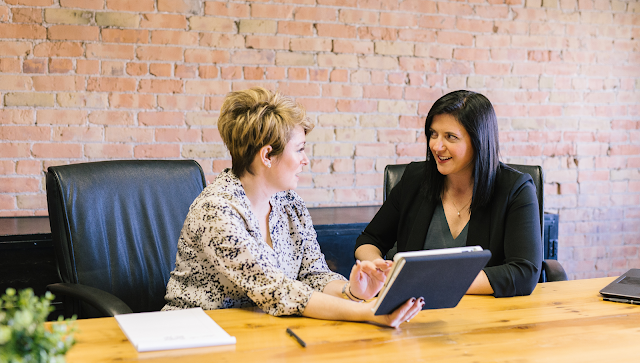Anna Johnstone, Women Returners Senior Coach, has created a short webinar on "How to Prepare for a Virtual Interview Process" as part of our new series to support our network through the COVID-19 crisis. Here's a summary of some of the key points, with a link at the end if you want to watch the full 15 minute webinar.
If you’re on a career break and it’s been a long time since you’ve had a job interview, then you may be feeling nervous and uncertain about the interview process. Given the current situation, where your interview is likely to be virtual, your worries might be heightened. We have some top tips here to help you prepare and feel more calm and confident about having a successful video interview.
1. Recognise the advantages of virtual interviews
Yes, you may lose some visual cues from your interviewer and it can be trickier to build rapport. However, on the plus side, you're in a familiar home environment and you can have all your preparation notes and your CV right next to you in case you need a prompt during the interview.
2. Familiarise yourself with the technology beforehand
Taking these few steps in advance of your interview will help ensure everything runs smoothly on the day:
- If your interview is via video, maximise your broadband speed – ideally it should be at least 10-15Mbps. If you can, use an ethernet cable to plug directly in to your router as this will give a faster and more reliable connection. On the day, try to make sure others in your household are not using the internet at the same time. Close any cloud-based applications e.g. Spotify, Dropbox as they’ll be using precious bandwidth
- Whichever application your interviewer has proposed using (e.g. Zoom, Skype, Microsoft Teams) download and practise using it beforehand with a friend or family member. Review helpful online guides so that you know how to do things like switch video or audio on and off, share your screen or hide your self-view if you find that distracting
- Check and adjust the video angle so that your camera is looking straight at you – use some thick hardback books underneath your laptop or tablet if needed to elevate it. Make sure your face can be seen clearly and there is no shadow or glare from the side
- Ensure your audio is clear – you may prefer to use a headset if you have one.
3. Prepare your interview responses & questions thoroughly
Even though a virtual interview may feel slightly less formal or you may have your preparation notes and CV to hand, it is still vital to prepare thoroughly so that you have clear, succinct and confident responses.
- Ask beforehand about the structure and length of the interview, as well as the competences they are looking for and the type of questions you might be asked – in that way you can focus your preparation.
- Do your research on the organisation, department and role and prepare 2 or 3 questions that you’d like to ask – an interview is still a two-way process.
- Prepare responses to two typical types of questions. 1. General questions e.g. ‘Why are you interested in this role?’ or ‘What are your top 3 strengths?’; and 2. Competence-based questions e.g. ‘Give me an example of when you……’. Prepare for competence questions using the S.T.A.R format.
4. Take time to prepare on the day
- Find a moment beforehand to gather your thoughts and take some deep breaths. Remind yourself of all your strengths, experience and achievements.
- Dress professionally, head-to-toe – just in case you need to stand up!
- For the interview, find a quiet spot without distractions – this can be challenging at the moment but do your best!
- Make sure your backdrop is professional and the lighting is good.
- Have your CV & preparation notes to hand
5. Consider your non-verbal behaviours
- Only switch your video on when the interviewer joins – that way you can enter confidently
- Vary your tone of voice to convey your energy and enthusiasm for the role and organisation
- Sit up tall and confidently
- Keep eye contact
- Smile!!
We wish you the best of luck!
For more tips watch our pre-recorded webinar: How to Prepare for a Virtual Interview Process presented by Women Returners Anna Johnstone [15 mins]











